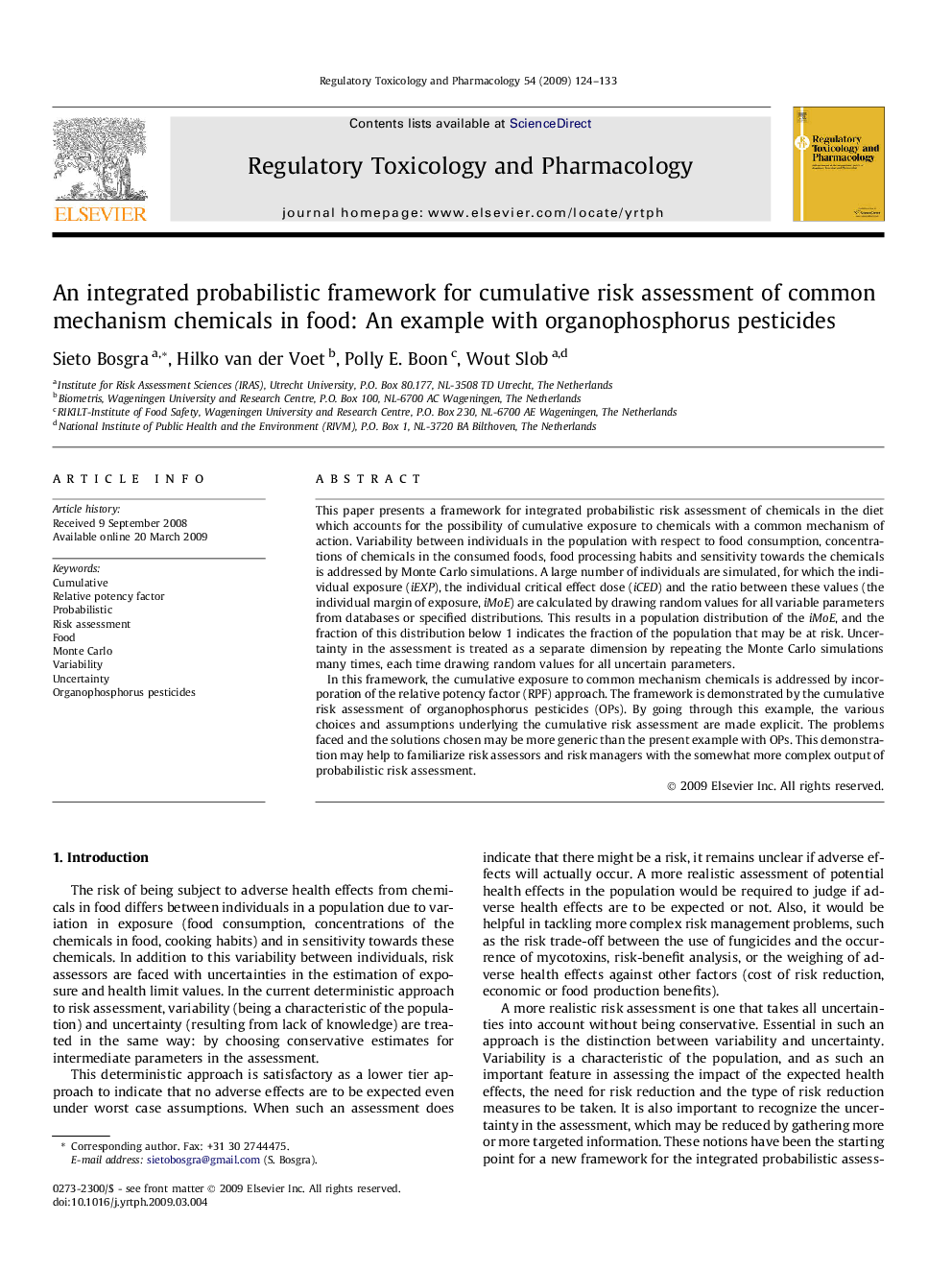| Article ID | Journal | Published Year | Pages | File Type |
|---|---|---|---|---|
| 5857895 | Regulatory Toxicology and Pharmacology | 2009 | 10 Pages |
This paper presents a framework for integrated probabilistic risk assessment of chemicals in the diet which accounts for the possibility of cumulative exposure to chemicals with a common mechanism of action. Variability between individuals in the population with respect to food consumption, concentrations of chemicals in the consumed foods, food processing habits and sensitivity towards the chemicals is addressed by Monte Carlo simulations. A large number of individuals are simulated, for which the individual exposure (iEXP), the individual critical effect dose (iCED) and the ratio between these values (the individual margin of exposure, iMoE) are calculated by drawing random values for all variable parameters from databases or specified distributions. This results in a population distribution of the iMoE, and the fraction of this distribution below 1 indicates the fraction of the population that may be at risk. Uncertainty in the assessment is treated as a separate dimension by repeating the Monte Carlo simulations many times, each time drawing random values for all uncertain parameters.In this framework, the cumulative exposure to common mechanism chemicals is addressed by incorporation of the relative potency factor (RPF) approach. The framework is demonstrated by the cumulative risk assessment of organophosphorus pesticides (OPs). By going through this example, the various choices and assumptions underlying the cumulative risk assessment are made explicit. The problems faced and the solutions chosen may be more generic than the present example with OPs. This demonstration may help to familiarize risk assessors and risk managers with the somewhat more complex output of probabilistic risk assessment.
